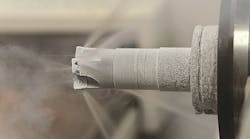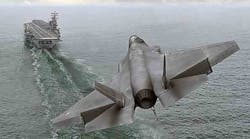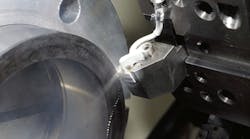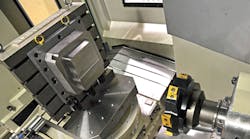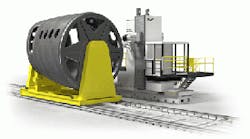Shops that have already adopted cryogenic machining are due to gain some new sources of insights and ideas to improve those operations. And shops that are considering the high-powered cutting technique will have another reference point to prepare them for that choice.
“Cryogenic” machining processes (cutting or turning) target the cutting tool and/or workpiece with liquid nitrogen (e.g., -200° C) to cool the surface, thereby allowing higher speeds/feeds, and eliminating the need for standard coolants.
“Cryogenic machining is particularly suited to the processing of tough materials like hardened/stainless/alloy steels, Inconel, and titanium, commonly used in aerospace part production,” according to Pete Tecos, executive vice president of 5ME, a software developer.
5ME and Okuma America are in partnership to demonstrate the effectiveness of cryogenic machining, including faster processing sequences, longer tool life, increased part quality, and reduced environmental impact. The cryo demonstration sites (one at 5ME’s Technical Center in Warren, Mich., another at Okuma’s Aerospace Center of Excellence in Charlotte, N.C.) will allow manufacturers to test various machining processes using 5ME’s cryogenic machining technology.
5ME’s suite includes asset monitoring and manufacturing efficiency software, cryogenic machining programs that are “brand agnostic” (i.e., applicable for any brand machine tool), application engineering, as well as tooling and coolant solutions.
5ME’s “multi-patented” cryogenic machining process transmits liquid nitrogen at -321°F through the spindle/turret and tool body, directly to the cutting edge, increasing throughput, part quality, tool life, and profitability in an environmentally friendly way that also reduces energy consumption.
Both cryo-machining demo locations will have Okuma machines outfitted with cryogenic systems that use vacuum-jacketed feed lines to deliver small flow rates of liquid nitrogen (LN2) through the tool directly to the cutting edge.
“Okuma was an early adopter of cryogenic machining and this partnership will continue the development of cryogenic machining applications, and allow manufacturers to present real-world production challenges to determine how ‘cryo’ can provide a solution,” explained Pete Tecos.
“Its sustainability advantages include the elimination of coolants and associated equipment, no need to wash chips, reduced energy costs, and no fumes, mist, or slip hazards – all of which contribute to a safer, more healthy work environment,” Tecos added. “It is a data-driven process because we can monitor temperature, flow rates, speeds/feeds, tool life, removal rates and energy consumption to enable greener, cleaner and more profitable production.”
“This partnership gives us the opportunity to show the productivity-boosting, energy-saving qualities of cryogenic machining, and assist aerospace manufacturers in their quest to meet tough part processing challenges,” offered Okuma America product specialist manager Wade Anderson.
